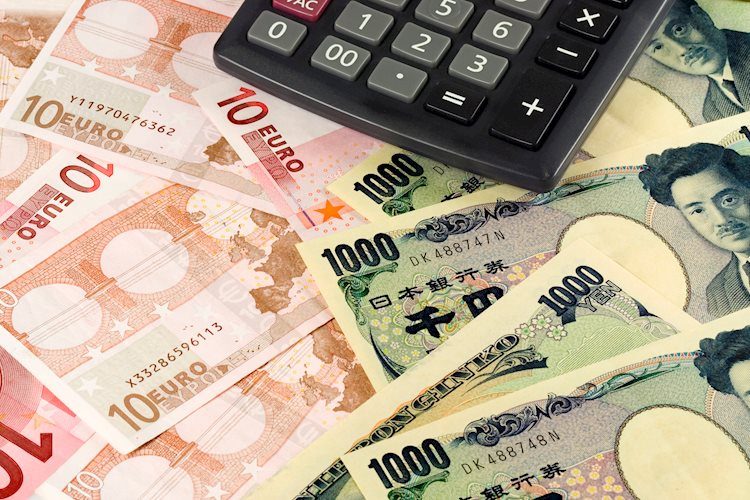The Eurozone’s Harmonized Index of Consumer Prices (HICP) rose by 2.2% year on year in August, meeting expectations and capping the Euro’s recovery. European Central Bank (ECB) official Francois Villeroy hinted at potential rate cuts, while Bundesbank President Joachim Nael warned that inflation levels have not yet reached the target. The Bank of Japan (BoJ) is set to make a policy decision, with concerns about the strength of the Yen potentially limiting further rate hikes.
The Euro weakened against the Japanese Yen in early North American trading, falling by 0.29% as Eurozone inflation approached the ECB’s 2% target. The EUR/JPY pair traded at 157.74 after reaching a high of 158.25. As the Eurostat data revealed a 2.2% YoY increase in HICP for August, the EUR/JPY remained near daily lows of 157.04.
The Euro’s recovery was hindered by dovish comments from ECB official Francois Villeroy, suggesting that the ECB may continue to lower borrowing costs. However, Bundesbank President Joachim Nael expressed concerns that inflation has not reached the desired levels, pushing back against a potential rate cut in October. The BoJ’s upcoming monetary policy decision raised concerns about the impact of a strong Yen on future rate hikes.
On a technical basis, the EUR/JPY pair shows a downward bias but could consolidate within the range of the Tenkan-Sen at 157.35 and the Kijun-Sen at 159.51. The Relative Strength Index (RSI) favors sellers, but recent price action indicates a possible upward movement. Buyers would need to push the price above the September high of 158.32 to target levels around 159.00 and 159.51. Conversely, a drop below 158.00 may lead to a test of the Tenkan-Sen at 157.35 and a potential low near 156.04.
The Euro is the currency used by 20 European Union countries in the Eurozone and is the second most traded currency globally after the US Dollar. The European Central Bank (ECB) in Frankfurt, Germany is responsible for managing the Eurozone’s monetary policy. Eurozone inflation data, measured by the Harmonized Index of Consumer Prices (HICP), plays a critical role in influencing ECB decisions. Economic indicators and data releases, including GDP, PMIs, employment figures, and consumer sentiment surveys, also impact the value of the Euro.
Trade balance data is another significant release for the Euro, measuring the difference between a country’s exports and imports. A positive trade balance strengthens a currency by increasing demand for exports, while a negative balance can weaken it. The performance of the four largest economies within the Eurozone – Germany, France, Italy, and Spain – is crucial as they account for a significant portion of the region’s economy. Overall, economic data, ECB decisions, and global factors influence the value of the Euro in the foreign exchange market.











